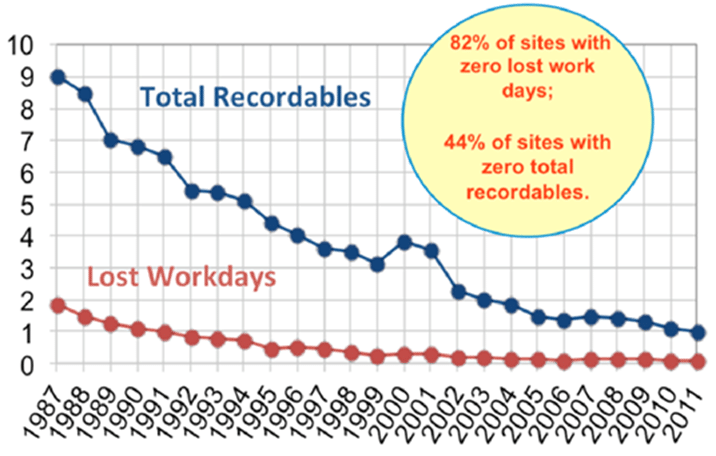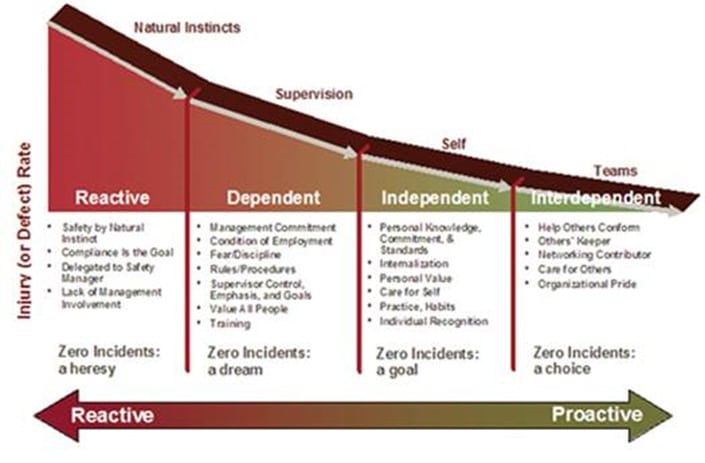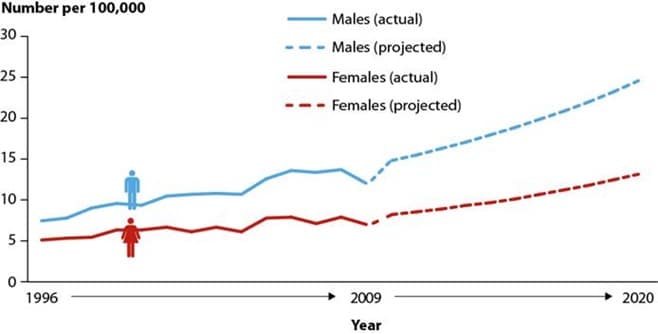 Sexy Curves and the Paradox of Risk
Sexy Curves and the Paradox of Risk
Rob’s new Book: “Following-Leading in Risk” is a MUST READ if you think you already know about Leadership. CHECK IT OUT
One of the modern myths of mechanistic safety is that injury rates have been coming down for the last 100 years. Presenters love to parade the curve on decline and talk about the modern plateau. The big challenge is how can we get to zero. It looks something like this:
Of course, this kind of thing only endorses the assumptions behind it that remain without criticism by dumb down safety. The assumption that injury rate defines safety is unchallenged, the type of injury recorded remains unchallenged and the notion of harm remains undefined. It is also neat and tidy how this love of curves, graphs and data disguises a mechanistic and numeric assumption about efficiency, performance and risk. No wonder then that the Bradley Curve reflects a similar shape and endorses similar assumptions. This is how we improve from the problem of ‘natural instincts’ (sounds like the doctrine of original sin) to interdependent ‘world class’ (whatever that means) safety. There are so many examples of this thinking in safety:
http://www.henkelsnetworks.com/AboutUs/Pages/Safety.aspx
http://rds.erg.it/en/2009/health-and-safety/index.html
http://www.rimbach.com/cgi-bin/Article/IHN/Number.idc?Number=597
Just think about what is assumed in this model made so popular by DuPont:
Apparently natural human instincts are problematic and this is associated with zero scepticism. Therefore, humanness and fallibility are fundamentally problematic. This is associated with high injury rates. The declining curve eventually gets to ‘zero incidents: a choice’. OK, so lets follow the logic. Humans have a natural instinct to be unsafe, in others words they a lack of safety is innate, then we somehow get to a point where we can reverse this instinct and now chose safety??? Who thinks up this nonsense and who believes it???
Isn’t it interesting that safety doesn’t talk about the purpose or sense of fallibility but rather wants to use the word ‘error’ and ‘failure’, all based on a non-disclosed assumption of what it is to be human and a person. It presupposes corruption by nature and defines humanness as a problem. Ah, how safety loves sexy curves and nonsense assumptions, including that any discussion of fallibility is attributed as a discourse for blame.
If one rejects the mechanistic worldview of safety and the numerics of safety decline one can just as easily argue that harm is not decreasing but increasing. We know that mental health is not only increasing worldwide but is the leading cause of non-fatal illness. (http://articles.mercola.com/sites/articles/archive/2013/09/12/mental-health-disorders.aspx). The increase in harm by mental health is an opposite curve to the Bradley curve and looks like this:
Just have a look at the Australian Institute of Health and Welfare and see just how many forms of harm are on the rise not decline. http://www.aihw.gov.au/australias-health/2012/room-for-improvement/
So safety not only defines harm as physical but also only physical harm as representative of safety. So, rather than getting closer to zero, the reality is, nothing has changed safety just counts differently. Safety has neatly defined itself towards zero under the delusion that we will one day escape these evil ‘natural instincts’.






Do you have any thoughts? Please share them below